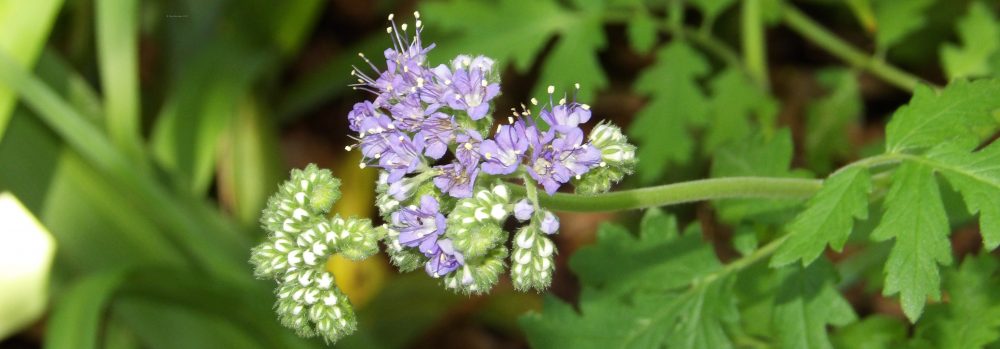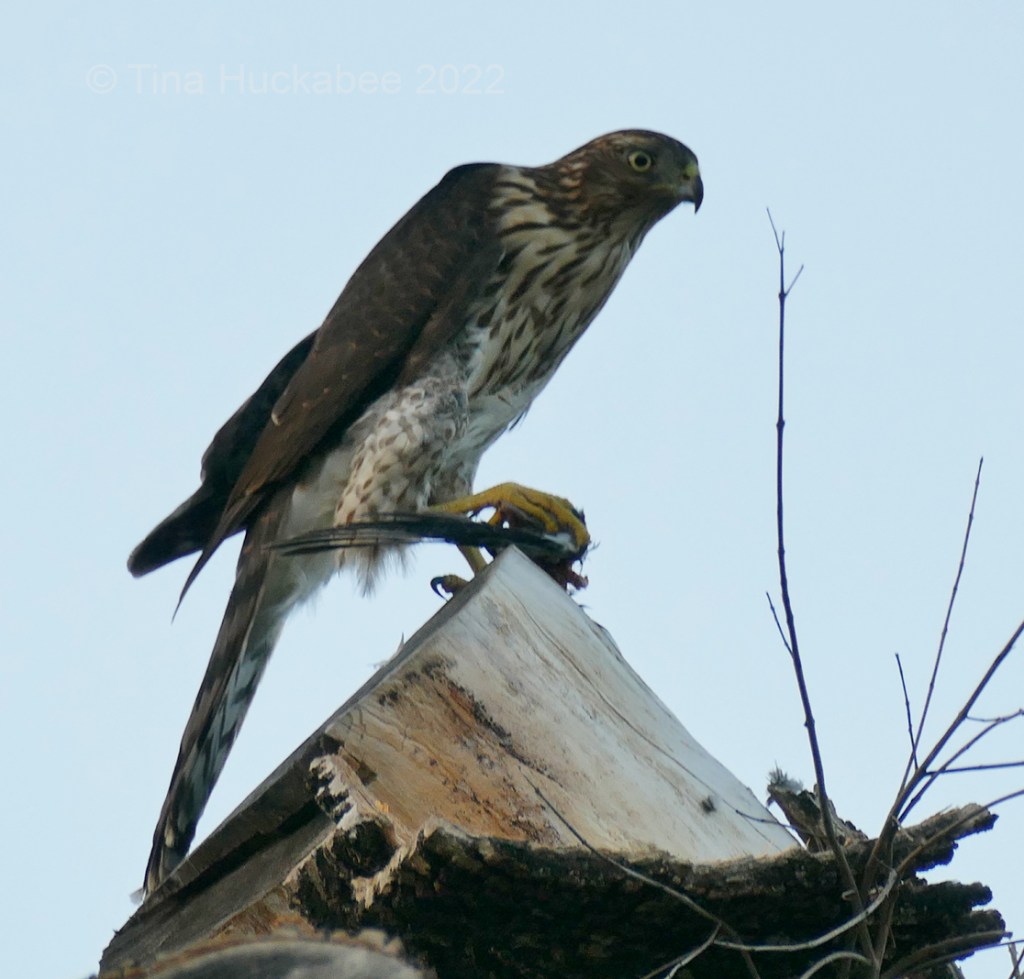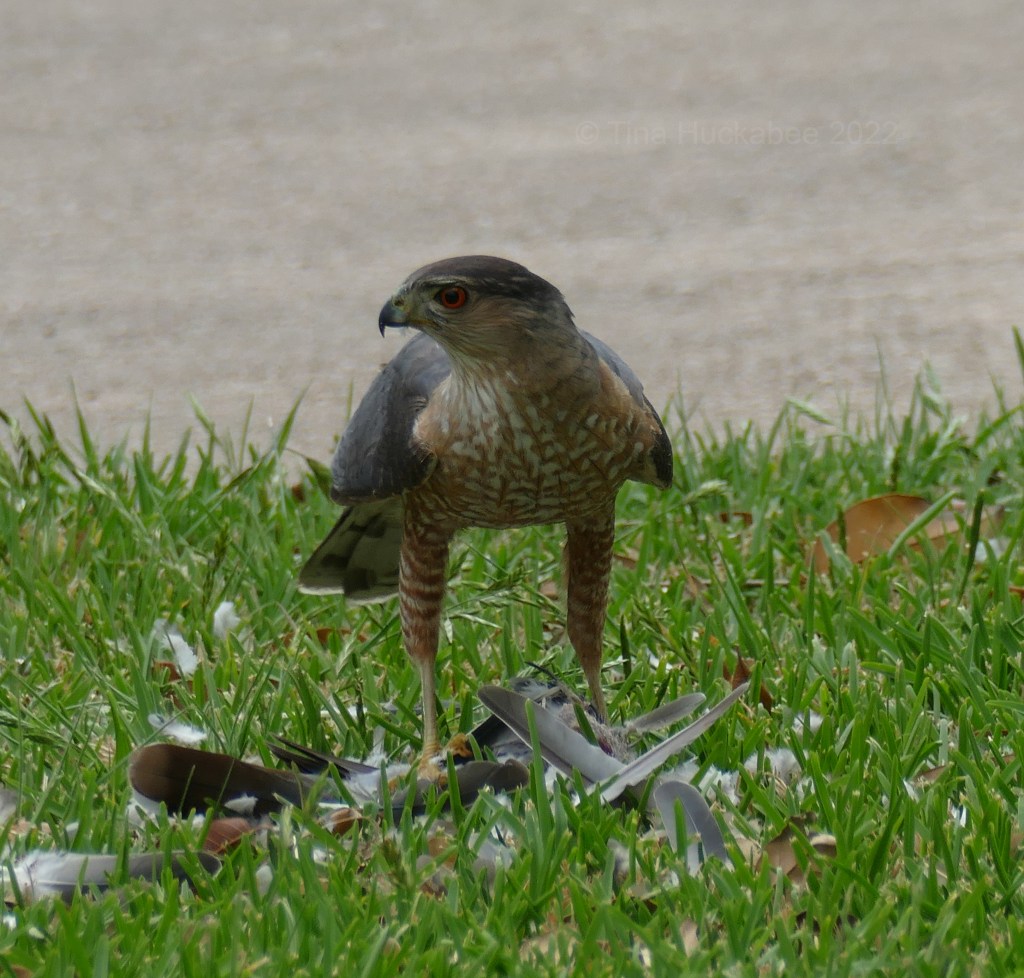With a fortuitous glance out the window, I saw a Cooper’s Hawk, Accipiter cooperii, glide to and perch on our swing beam.

Typically hunters of other birds rather than rodents, the only potential prey that I noticed were a couple of Grey Squirrels running atop the wooden fence behind the swing beam as the hawk landed, and who nearly tied themselves into a knot as they scrambled away from the hawk’s reach. That was a funny sight, but I can’t blame the squirrels for their caution!

There are several Cooper’s in our neighborhood and this time of year, I see at least one almost daily. I think this is a juvenile or young adult hawk, as its eyes are not the deep orange of an adult, but more golden colored. Also, it didn’t catch anything; young hawks have a steep learning curve.
Happy hunting handsome–there are more than enough doves.






